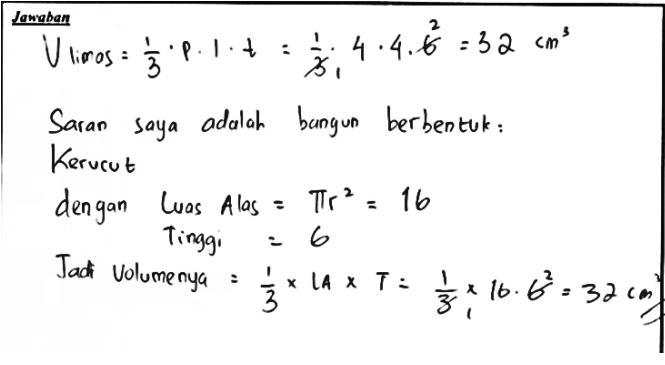Analyzing junior high school students’ mathematical creative thinking skill in mathematical modelling
Main Article Content
Abstract
Creative thinking skills are one of the skills that must be developed in order to pursue developments in the 21st century. The development of creative thinking skills must be applied within a formal education level. One of the areas of study taught in formal education is mathematics. Mathematics can be used to solve problems in everyday life by using mathematical modeling. This study aimed to analyze the students' mathematical creative thinking skills in mathematical modeling with descriptive design. The steps on this research consisted of designing a test of creative thinking skills; Interviewed test results of mathematical creative thinking skills; and analyzed student answers results on mathematical creative thinking skills tests. The subject of the study consisted of 65 of junior high school students of class VIII. Findings demonstrate the skills of creative thinking students in modeling in the category of students with high mathematical abilities is that students can create unique models and seek solutions using different ways with logical and systematic, in medium category, students have a tendency to use trial and error methods as well as procedural ways to test models made, while in low category, students tend to use trial and error Test the model and resolve the problem.
Downloads
Article Details
References
S. Zubaidah, "Keterampilan Abad Ke-21 : Keterampilan yang Diajarkan Melalui Pembelajaran," 2018.
T. Wrahatnolo and Munoto, "21st centuries skill implication on educational system," IOP. Conf. Ser.:Mater. Sci. Eng., vol. 296, 2018.
Pacific Policy Research Center, "21st Century Skills for Students and Teachers," Kamehameha Schools, Research & Evaluation Division., Honolulu, 2010.
P21, 21st Century Skills, Education & Competitiveness., Washington DC: : Partnership for 21st Century Skills., 2008.
J. Voogt & N. P. A. Roblin. Comparative analysis of international frameworks for 21 st century competences: Implications for national curriculum policies. Journal of Curriculum Studies, 44(3), 299–321, 2012
J. Sitorus and Masrayati, "Students’ creative thinking process stages: Implementation of realistic mathematics education," Thinking Skills and Creativity., vol. 22, pp. 111-120, 2016.
D. N. Munahefi, S. B. Waluya and Rochmad, "Analysis of creative mathematic thinking ability in problem based learning model based on self-regulation learning," IOP Conf. Ser : J. Phys.: Conf., vol. 983, 2018.
N. Livne, O. Livne and C. Wight, "Enhancing Mathematical Creativity Through Multiple Solutions To Open-Ended Problems Online," 2008.
Q. Dan & J. Xie. Mathematical Modelling Skills and Creative Thinking Levels: An Experimental Study. In G. Kaiser, W. Blum, R. Borromeo Ferri, & G. Stillman (Eds.), Trends in Teaching and Learning of Mathematical Modelling (pp. 457–466). 2011
T.Y.E. Siswono and W. Novitasari. Kemampuan Berpikir Kreatif Melalui Pemecahan Masalah Tipe “What’s Another Way.” Jurnal Pendidikan Matematika “Transformasi,” 1(1), 45–61. 2007
M. Barak and Y. Doppelt. (Mari wes Dapus) Using Portfolios to Enhance Creative Thinking. The Journal of Technology Studies, 26(2), 16–25. 2000
G. Ervynck. Mathematical creativity. 42–43. 1988
B. Sriraman. The characteristics of mathematical creativity. ZDM - International Journal on Mathematics Education, 41(1–2), 13–27. 2009
D. Fardah. Analisis Proses dan Kemampuan Berpikir Kreatif Siswa dalam Matematika Melalui Tugas Open-Ended. Kreano, Jurnal Matematika Kreatif-Inovatif, 2012

